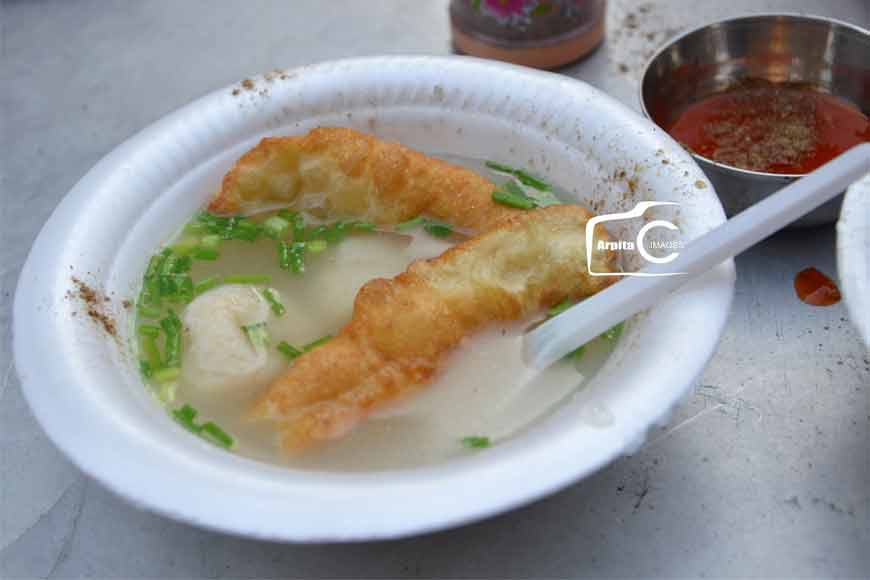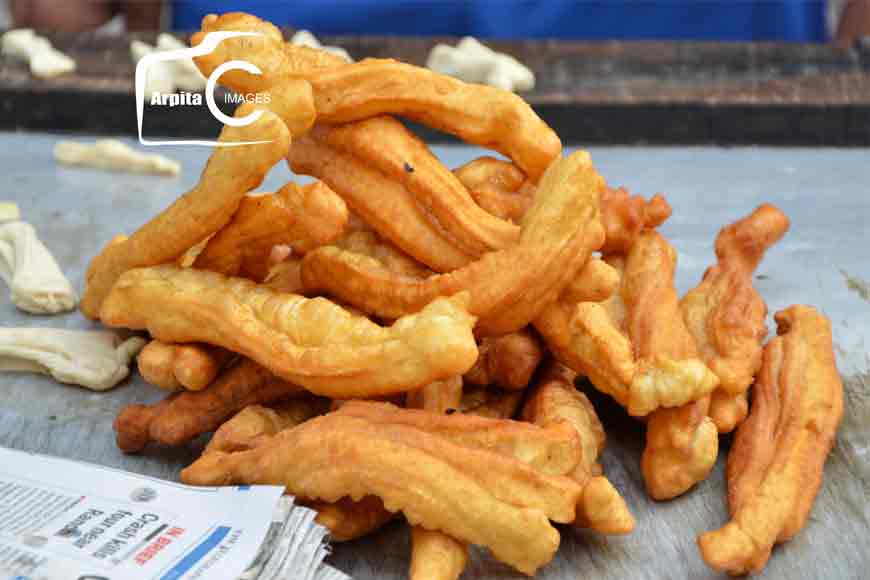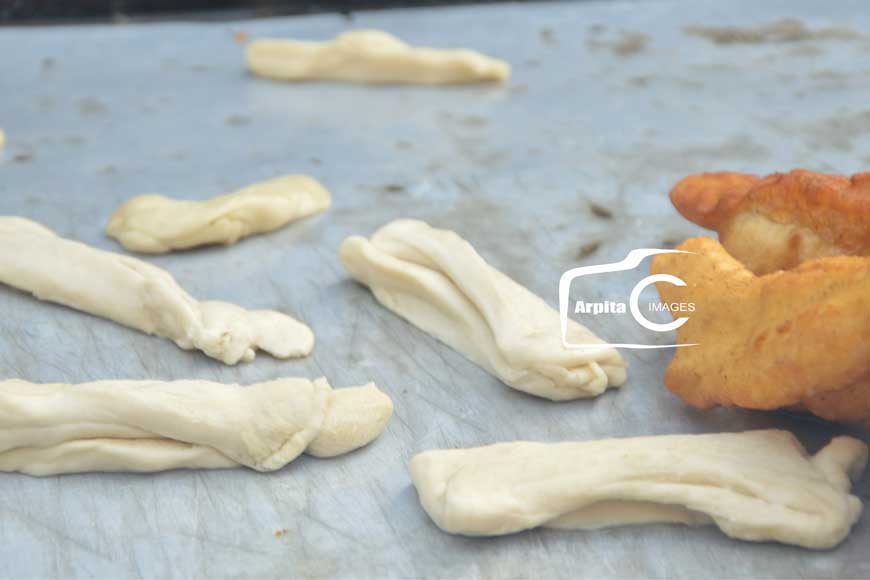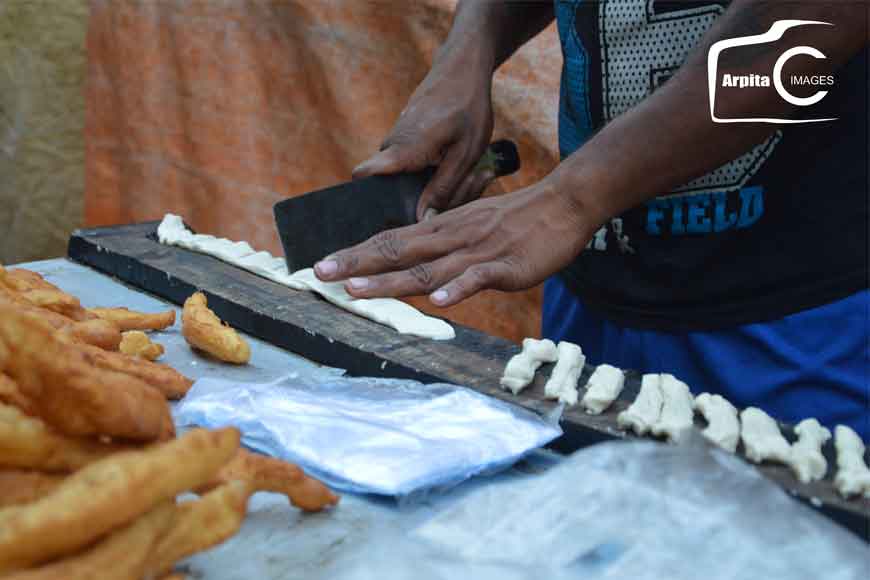What is You Tiao? Try it ahead of Chinese New Year

Arpita is an explorer of the past and loves travelling through the historical tracts of Kolkata to discover hidden gems. She is also an ex-guest lecturer
Avid food lovers of Kolkata who never miss the hot fish ball soup, momo, wanton, Sui-mai at Kolkata’s one and only Tiretti Bazar Momo Market, may seem foxed if quizzed about You Tiao or You Zha Kuei or deep-fried ghost or deep-fried devil.Well, it’s neither a devil or a ghost, but a food itemrelated to China’s history, dating back to 12th century. Interestingly, it was born out of a public protest against a ruling dynasty. Even in the 20th century this bread was an icon of students’protest movement against the Chinese government.
This roasted flat bread is locally known as Chinese bread or Chinese fried Churros or Chinese bread sticks or Chinese Oil Sticks.You Tiao literally means ‘Fried Strips.’ Traditionally, the Chinese have this as breakfast with ‘Doujiang,’ a kind of Soy Milk or with ‘Conji’ (fermented rice gruel). It is basically a pair of lightly salted long fried sticks attached together, made of leaved flour dough and fried in vegetable oil. With different names, it is commonly found in most Chinatowns around the world. Its sweet version is known as Tang Gao,which is similar in appearance but shorter in length.

The story of You Tiao is associated with the life of China’s most beloved 12th century hero Yue Fei. He is considered asan epitome of loyalty in Chinese culture. Yue Fei was born in a humble family of Xiaoti,Yonghe Village,Tangyin, Xiangzhou, Henan (in present day Tangyin, Anyang County, Henan). When he was very young his mother tattooed ‘Jin Zhong Bao Guo’on his back, meaning - loyalty and patriotism. He eventually became a famous military general who led the Southern Song forces in a war against the Jurchen invaders.On 9th January 1127, the Juerchens invadedthe Song capital of Kaifeng, capturing the reigning emperor Gaozong and his recently abdicated father. They fled southwards and established a new capital at Hangxhou. Thus, began the history of Southern Song Dynasty. Subsequently many Song generals attempted to rescue the lost territories. Among them Yue Fei was most successful.Once he even defeated a force of 500,000 Jinwarriors with only 800 men. The Jin commanders considered it easier to shake Mount Taishanthanto dislodge Yue’s army.
Unfortunately, as Yue was about to recover Kaifeng, Emperor Gaozongin association with another general Han Shizong, recalled him to Hangxhou. Yue had to obey the king’s order and return. The recall was orchestrated by the treachery of the Prime Minister Qin Kuai and his wife, who were jealous of Yue Fei’s success. They betrayed the Southern Song Dynasty and formed a secret liaison with the invading Jin tribe. They implicated Yue in false charges got him imprisoned and finally executed.The news triggered huge outrage against the Prime Minister.Common people protest edevery where. At that time two food vendors met and started chatting over Yue Fei’s unjust murder on the bank of Anqiao River. One of them sold ‘Shao bing’ or toasted sesame pancakes and the other sold ‘Cifantuan’ or fried sweet rice balls.
During this discussion they both became extremely agitated and decided to explicitly exhibit their protest against this injustice. Then the pancake vendor sculpted miniatures of two people out of his pancake dough. One of the figures represented Qin Kuai and the other represented his wife Madam Wang. Then he grabbed his dough cutter and started slashing the miniatures of Qin Kuai and his wife. But the rice ball vendor was not satisfied. He brought his deep- frying wok and re-sculpted the two figures and twisted them together into one piece and then threw them in the hot oil and shouted ‘Hey! Come see Kuai being deep-fried! Come see Kuai being deep-fried!’ The passerby heard this call and congregated to enjoy the spectacle of two replicated figurines of Qin Kuai and his wife sizzling in the hot oil. They shouted “Fried Kuai!”

As luck would have it, one day when Qin Kuai was passing by the river he heard the cry “Fried Kuai.” He became furious and ordered the soldiers to arrest and produce the two vendors before him with their wok. After seeing two atrocious looking figures he demanded explanation. The pancake maker cleverly answered that they were common food vendors and had no intention of subverting the government. He put forth the alibi that, it was mere coincidence that the name of the food and the minister’s name sounded similar. They were actually different Chinese alphabets with identical sound. But the minister was still not convinced about edibility of these burned brown breads. The two vendors then started eating‘fried Kuai’ and convinced the Minister that frying made the bread delicious and crispy. Unable to incriminate the crafty vendors, Kuai left the place in anger.
As people heard about the incident, they rushed towards the river bank to taste fried Kuai. The two food vendors combined their business and turned specialists of fried Kuai. They were probably inspired by popular Buddhist belief of punishment meted out to evil doers in hell.Gradually,You Tiao’s popularity spread, and it became a common food item for the masses. The Cantonese still call it You Tiao, You Zhar Gui.
In the beginning fried Kuai was popular as people wanted to express anger by eating it. But soon,fried Kuai’staste and affordability were a big hit. The vendors developed a simple version as it took a long time to sculpt the faces of Qin Kuai and his wife and the customers had to wait.They made many small strips of dough and twisted two strips of dough (One strip represents Qin Kuai and the other his wife) together before frying it. It became the most popular street food of the town and soon many food vendors of Ling’an started to make fried Kuai. Eventually it was introduced to other cities of China and later fried Kuai got a different name, “You Tiao”.
During Cultural Revolution, educated youths used food related propaganda as a way of symbolically addressing issues aimed at the ‘laobaixing’ or common people. The popular and cheapest Shanghai street food appeared as a political icon representing the economic distress of students surviving on government scholarships who could only afford to eat, at least three You Tiaos a day.
This bread reached Kolkata with the Chinese migrants who came in the late eighteenth century. Guangzhou, also known as Canton, was an important seaport of Southern Song Dynasty. It used to be the major terminus of the maritime Silk Route and served as the main port of business between, what historians said, ‘to and from British-Asia to and from Foreign Asia’. After the Battle of Plassey, the trade between British East India Company and China gradually increased, peaking between 1770 and 1780. Gold, silver, opium, silk and cotton clothes were mainly traded. As Calcutta was one of the main ports in this route,some Chinese wealth hunters dropped here during this journey.On 1st April, 1784 the following advertisement was published in ‘Calcutta Gazettes’ which documents the migration of Chinese immigrants who were technically accomplished and sort of Jack of all trades!

“Tom Fatt, native of China, begs to inform the Gentlemen of Calcutta and the public in general, that any person having tanks in their gardens, or elsewhere, and being desirous to have them cleared out, he will contact with them for the same upon very reasonable terms, being certain that he can finish the work quicker than any Bengali people, by means of a China Pump. Any Gentleman willing to contact with the said Mr. Fatt, is requested to enquire as his Rum Works, at Sulkey opposite Calcutta.
N.B. He makes Loaf-Sugar equal in quality to that made in Europe, and excellent Sugar –candy. Also all sorts of cabinet work, the same as in China.”
The census of 1821 shows there were 414 Chinese in Kolkata. Till this day, the Chinese community of Kolkata mainly comprise of people from Canton and Hakka. These immigrants from Southern China brought their culture and their food to India. The Momo Market of Tiretta was actually a Tiffin market, to provide cheap Tiffin for these Chinese laborers. They also brought You Tiao, which is still very popular because of its affordability at only Rs. 5 per piece!
(Input - Amitava Purakayastha)










